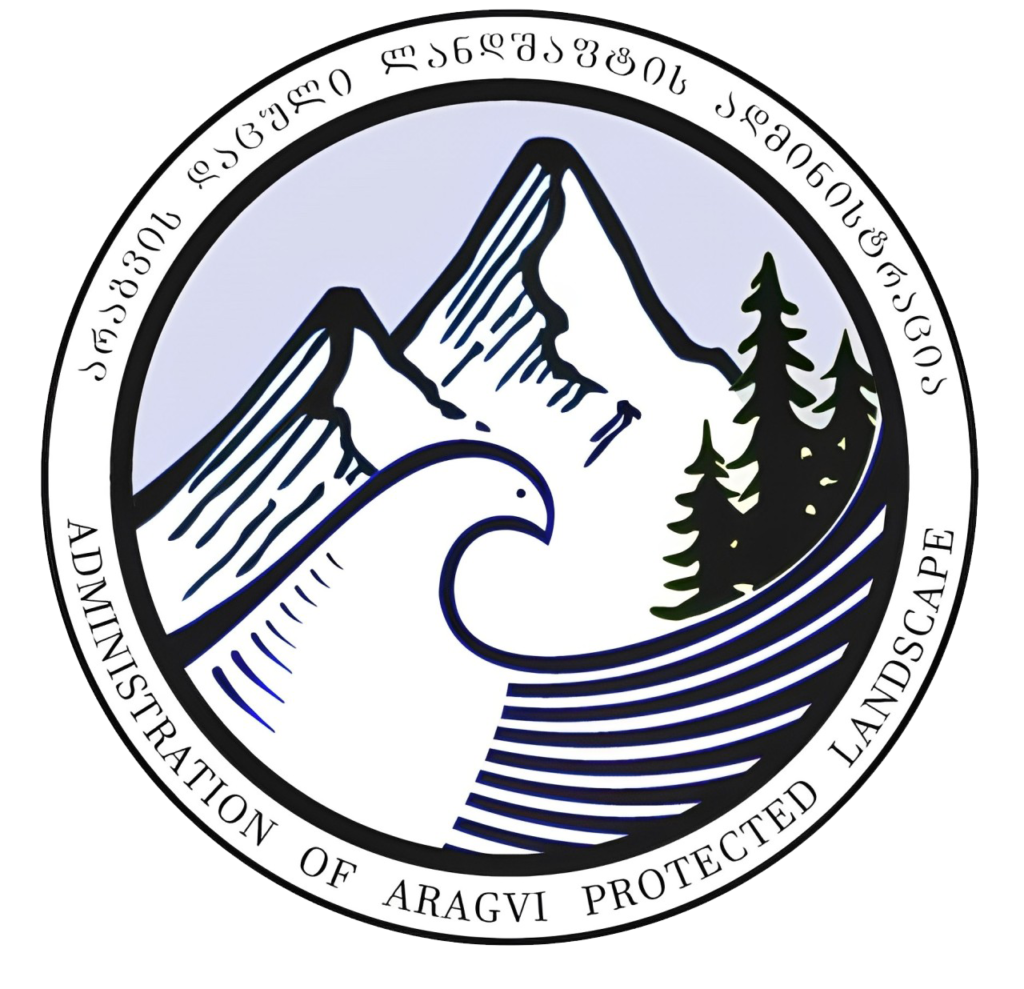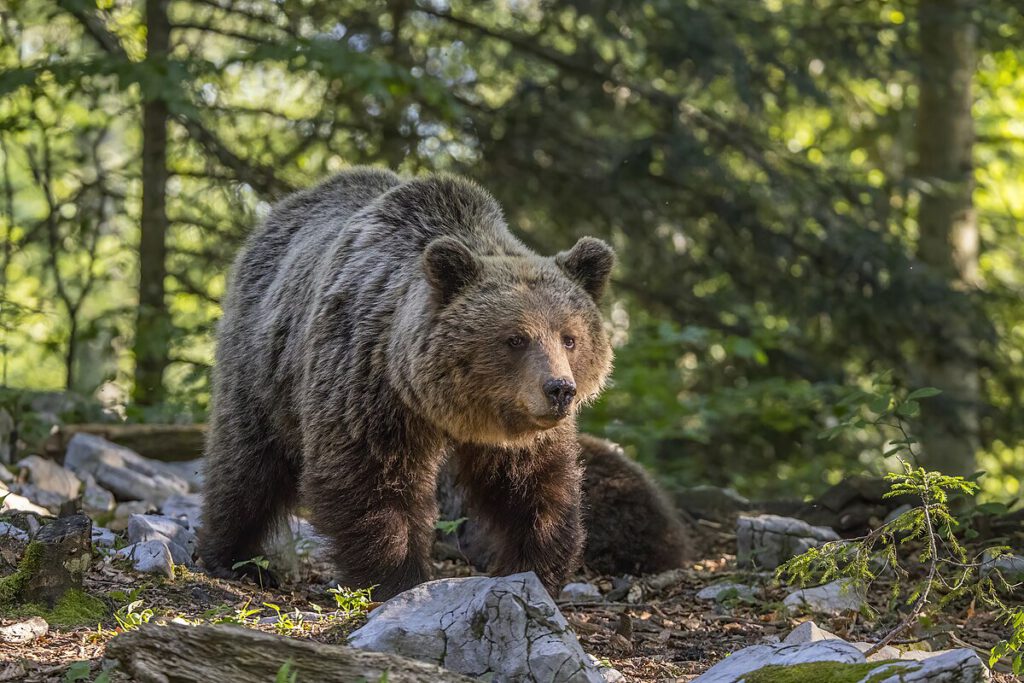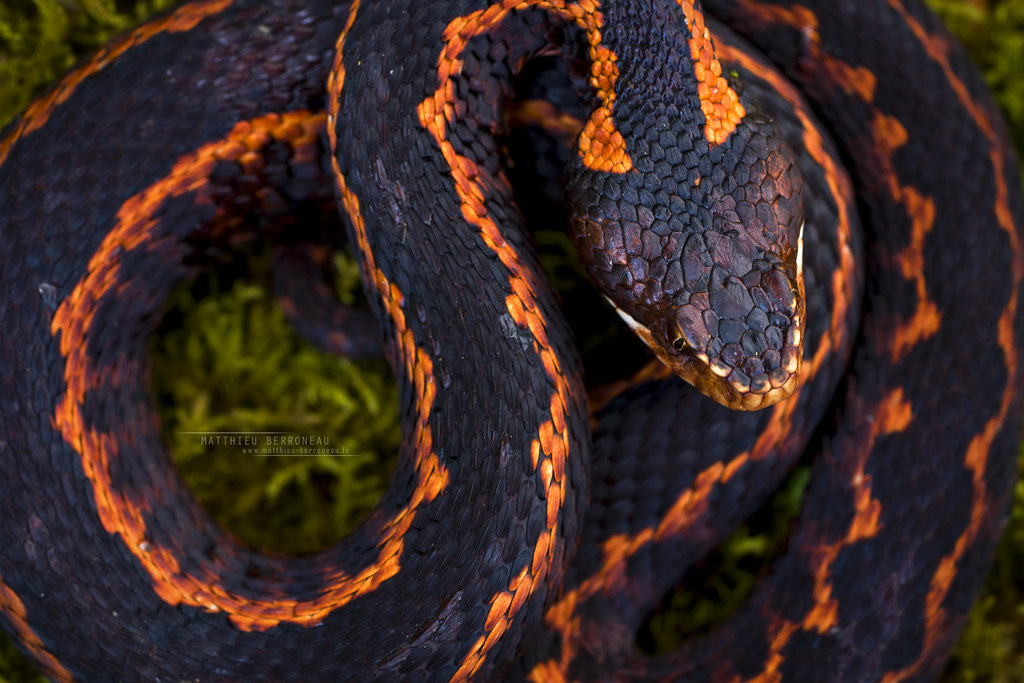
Fauna
The fauna of the Aragvi Protected Landscape is not yet thoroughly studied, but due to the area’s diverse landscapes and variety of habitats, it is assumed to be equally rich in biodiversity.
Data from the adjacent Pshav-Khevsureti National Park indicate the presence of 55 species of mammals, 132 species of birds, 9 species of reptiles, and 6 species of amphibians.
A similar number of species is expected in the Aragvi Protected Landscape, which borders the national park to the south. However, the composition may differ slightly, with the possible absence of certain high-mountain species and the presence of others typical for lower elevations.

Among mammals, large carnivores represent some of the most important species within the Aragvi Protected Landscape. These include the brown bear (Ursus arctos), gray wolf (Canis lupus), and Eurasian lynx (Lynx lynx). Other significant predators and indicator species—such as the wildcat (Felis silvestris) and the Eurasian otter (Lutra lutra)—should also not be overlooked.
Among ungulates, the Caucasian endemic subspecies of the chamois (Rupicapra rupicapra caucasica) is particularly valuable.
The potential presence of two other ungulate species—the East Caucasian tur (Capra cylindricornis) and the bezoar goat (Capra aegagrus)—has also been noted in the landscape, though if present, their populations are likely to be very small and sporadic.
A number of small endemic mammal species—particularly voles and shrews—are also expected to inhabit the area, further contributing to its ecological richness.
The Aragvi Protected Landscape hosts several important bird species, including two endemic Galliformes: the Caucasian snowcock (Tetraogallus caucasicus) and the Caucasian black grouse (Tetrao mlokosiewiczi).
Large birds of prey are also well represented, most notably the griffon vulture (Gyps fulvus), cinereous vulture (Aegypius monachus), bearded vulture (Gypaetus barbatus), and golden eagle (Aquila chrysaetos)—all of which are listed in Georgia’s Red List.
Several endemic passerine species are found in the area as well, such as the green warblers Phylloscopus nitidus and Phylloscopus lorenzii. Other notable high-elevation birds include Güldenstädt’s redstart (Phoenicurus erythrogastrus), great rosefinch (Carpodacus rubicilla), wallcreeper (Tichodroma muraria), horned lark (Eremophila alpestris), and the red-fronted serin (Serinus pusillus).
The landscape also serves as an important stopover site during bird migration, especially for concentrations of migrating raptors.
Several reptile species have been recorded in the region, including the rough-tailed lizard (Darevskia rudis) and venomous vipers such as Vipera kaznakovi and Vipera dinniki. However, it is evident that even among relatively well-known taxonomic groups—such as reptiles, birds, and small mammals—species inventories remain incomplete. Baseline data for many other faunal groups, particularly invertebrates (including ecologically important bioindicator groups such as butterflies and grasshoppers), are almost entirely lacking or nonexistent.
The following species have been identified as key/target species for the Aragvi Protected Landscape. Most of the vertebrates listed are considered priority species for the Caucasus Ecoregion and are included in Georgia’s Red List (with the exception of the snowcock and wildcat). In addition, many of these species are also target species in the neighboring national park.
The distribution of these species—as important “umbrella species”—was a key factor in the development of the zoning scheme for the Aragvi Protected Landscape.

The European yew (Taxus baccata), a species listed in Georgia’s Red List, is rarely found in mid-mountain mixed deciduous forests. In the Aragvi Protected Landscape, it occurs naturally in forests below the village of Apsho and on steep western slopes above the main road, within Segment 4 of Zone 1 (Sharakevi Valley and adjacent woodlands near Kanatiani).
All recorded yew trees in the area are relatively young, suggesting that in the past, the species may have been subject to selective logging due to the valuable properties of its wood. Although the current local yew population is small and consists of young individuals, there is no immediate threat to their survival. Nonetheless, any felling of mature trees or saplings must be strictly prohibited to ensure the species’ conservation.
The pyramidal orchid (Anacamptis pyramidalis) is a species sensitive to meadow management practices and grazing intensity. Its presence typically indicates properly maintained meadows with moderate grazing pressure at mid-mountain elevations. So far, only two locations have been identified within the protected area: meadows above Chargali and pastures above Khomi.
Major threats to this species include overgrazing or, conversely, the abandonment of meadows, which can lead to shrub encroachment and eventual forestation.

Butterflies of the genus Parnassius are represented by three species that may occur widely across the Aragvi Protected Landscape: Parnassius apollo, the similarly patterned but smaller P. nordmanni, and P. mnemosyne.
P. mnemosyne is primarily associated with open broadleaf and mixed forests, particularly in areas where species of the genus Corydalis grow—these plants serve as the main larval food source. P. nordmanni also feeds on various Corydalis species and typically inhabits scree slopes, rocky terrain, and alpine meadows up to 3,000 meters in elevation.
P. apollo prefers rocky habitats, cliffs, and areas with sparse vegetation where its larvae feed on Sedum, Sempervivum, and Hylotelephium caucasicum. Adults are most commonly found in species-rich meadows up to 2,000 meters above sea level.
This species has been confirmed in both Pshav-Khevsureti (subalpine meadows above Chalisopeli, Barisakho, and Matura) and Gudamakari (subalpine meadows above Bursatskhiri), highlighting its presence across multiple zones within the protected landscape.
All three Parnassius species are highly sensitive to changes in traditional land use and to the intensification of forestry and agriculture.
For example, P. apollo requires disturbed, sparsely vegetated areas for its larvae—habitats that are threatened by encroachment from shrubs and trees. At the same time, adult butterflies depend on species-rich meadows with sufficient nectar sources during their flight period in June and July. These meadows face dual threats: overgrazing on the one hand, and abandonment (leading to shrub encroachment and natural succession) on the other.
Maintaining a careful balance through moderate, traditional land use practices is critical for the survival of these vulnerable species.
The brown trout (Salmo fario) is a species listed in Georgia’s Red List and inhabits clean, flowing waters, making it a reliable indicator of water quality.
Major threats to its survival include water pollution, habitat fragmentation (particularly the disruption of river continuity), and illegal fishing practices.
The Caucasian snowcock (Tetraogallus caucasicus) is an endemic species found only in the Greater Caucasus.
It inhabits high mountain ridges, particularly rocky habitats, and descends to lower elevations during winter.
In the Aragvi Protected Landscape, the presence of the Caucasian snowcock is well documented at the highest elevations, especially along the northern border of the protected area.

The brown bear (Ursus arctos) is a key indicator species, reflecting the overall health of ecosystems and biodiversity. As a top predator in the food chain across most Caucasian habitats, it plays a critical ecological role. The brown bear inhabits forested areas from low elevations up to the upper forest boundary, and can also be found in high-mountain pastures. However, the Caucasian population has declined sharply in recent decades, primarily due to poaching and habitat loss.
In the Aragvi Protected Landscape, brown bears are distributed throughout the area, with a preference for remote valleys featuring a mosaic of forests, shrublands, and meadows.
The Eurasian lynx (Lynx lynx) is one of the three apex predators of the Caucasus, alongside the brown bear and the wolf.
Its precise distribution, population size, and trends remain unclear, yet it is considered a priority species in Georgia. Poaching is believed to be the main threat to its survival.
Within the Aragvi Protected Landscape, the lynx is expected to occur in all suitable habitats across the entire territory.

The wildcat (Felis silvestris) is an indicator species of high-quality deciduous and mixed forests, characterized by suitable tree species composition, spatial and age structure, and the presence of deadwood—an essential component for numerous other invertebrate and vertebrate species.
Its regular presence is expected in all mature beech and mixed forests at lower elevations of the Aragvi Protected Landscape (based on field observations).
The Eurasian otter (Lutra lutra), a species listed in Georgia’s Red List, inhabits clean, flowing waters and, alongside the brown trout, serves as a strong indicator of river ecosystem health.
Otters are expected to be present in all suitable rivers and streams within the protected landscape that provide sufficient food sources—namely, stable fish populations—particularly in the low and mid-elevation zones of the Aragvi Protected Landscape.
The Caucasian chamois (Rupicapra rupicapra caucasica) is an endemic subspecies found in high-altitude regions of both the Greater and Lesser Caucasus. Its population has declined sharply over the past century, with poaching and habitat loss posing the most significant threats.
In the Aragvi Protected Landscape, chamois have been recorded at higher elevations across the area, with notable concentrations along the northern border of the protected territory.
Beyond wild biodiversity, the Aragvi Protected Landscape is also of great importance for its unique agrobiodiversity, including traditional local fruit varieties, ancient grain cultivars, and indigenous livestock breeds.
In terms of livestock, the presence of the local Georgian Mountain Cattle breed is especially significant. While this breed has nearly disappeared in its pure form, recent conservation efforts and projects are working toward its identification and restoration. The region of Pshavi and Khevsureti is also one of the core habitats for the Georgian Grey Mountain Honeybee (Apis mellifera caucasica), an endemic and ecologically valuable bee variety.
Regarding crop diversity, several ancient wheat varieties have been confirmed in the Aragvi region—such as Asli (Triticum dicoccum) and Dika (T. carthlicum). Historically, the cultivation of millet (known locally as kvrima – Setaria moriver troutcharica) was also practiced, along with a greater variety of legumes, including lentils.
Local cultivars and landraces can also be found among traditional fruit trees grown in the region, including various species of apple (Malus spp.), plum (Prunus spp.), and pear (Pyrus spp.). However, the full extent of the fruit diversity cultivated in the mountain areas remains insufficiently documented and warrants further research.